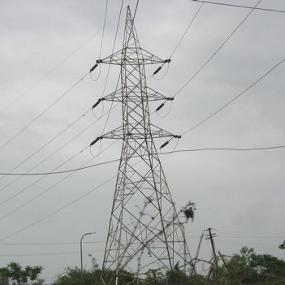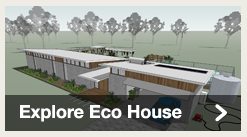Build it Back Greenbushfires
Grid connection and tariffs
 Before you go ahead with installing a
grid-interactive solar or wind system, you will need to address a
number of issues with your electricity retailer and electricity
distributor.
Before you go ahead with installing a
grid-interactive solar or wind system, you will need to address a
number of issues with your electricity retailer and electricity
distributor.
The electricity retailer is responsible for the sale and purchase of any electricity that you use or your system transfers back to the grid. Your electricity account comes from your retailer.
The distributor is responsible for the physical connection of your system, and house, to the electricity grid.
There will be a single distributor allocated to your location, so you cannot choose an alternative distributor. The process and technical details for grid connection will vary depending on your specific electricity distributor.
Negotiations can be straightforward or complicated, depending on the policies of your distributor and they may or may not require you to incorporate additional costly items into your system to meet their connection requirements.
|
System type |
Upfront cost |
Ongoing costs |
Greenhouse Gas emissions |
|
Fuel generator only |
Low |
High |
High |
|
Fuel generator, inverter and batteries |
Medium |
Medium |
Medium |
|
Fuel generator, inverter and batteries supplemented with renewable energy source/s |
Medium - High |
Low - Medium |
Low - Medium |
|
Renewable energy source/s, inverter and batteries, with generator back-up |
High |
Low |
Low |
|
Renewable energy source/s, inverter and batteries, without generator back-up |
Highest |
Lowest |
Lowest |
Not connected to the grid
In bushfire prone areas, stand alone power systems can be an excellent alternative to being connected to ageing power lines that require constant maintenance, vegetation clearance and potentially insulating or undergrounding if they are a bushfire risk.
Given that rural powerlines will often only provide connection to a small number of properties, it may be more cost effective for electricity distributors and/or governments to assist some people financially to set up their own stand alone power system as opposed to maintaining the under utilised power lines in their location. And if those stand alone power systems are designed with a high proportion of renewable generation (such as solar or wind), the carbon footprint of those properties may be also be significantly reduced.
This table outlines the different types of stand alone systems available and their upfront costs, ongoing costs and greenhouse gas emissions.
Stand alone systems can be powered by solar or wind or a combination of both. Typically hybrid systems include a wind turbine, photovoltaic (solar) panels and batteries and may include a petrol or diesel driven generator set. The advantage of hybrid systems is that the multiple energy sources reduce the risk of running out of energy. For example, often when it is not windy, it is likely to be sunny.
Suppliers
Listed suppliers are a guide and are not endorsed by Green Cross Australia or the Alternative Technology Association.




